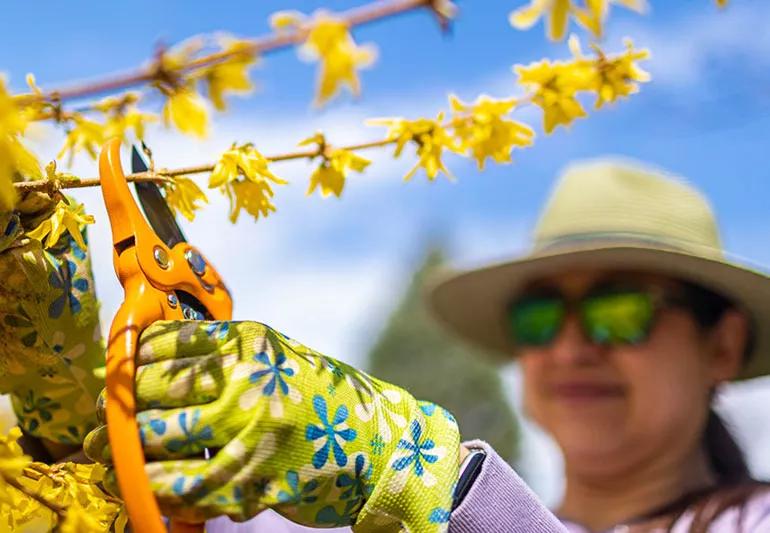Advertisement
5 tips to preventing aches and pains

Many people find gardening to be a peaceful and therapeutic activity, but it’s hard work for your body — especially if you struggle with chronic pain. That’s why it’s important to take the smart approach and use all of the tricks and tools available to help you.
Advertisement
Cleveland Clinic is a non-profit academic medical center. Advertising on our site helps support our mission. We do not endorse non-Cleveland Clinic products or services. Policy
Pain management specialist Hong Shen, MD, shares five tips for avoiding injuries and minimizing the impact of gardening on your body.
Gardening works a lot of muscles and joints. It involves a range of motions, including standing, leaning, kneeling, crouching, bending over, squatting, twisting and lifting.
Strong core muscles and flexibility are key to preventing injuries that may happen during gardening, such as lower back pain, strained shoulders or pulled leg muscles.
A sedentary lifestyle, including sitting for long periods of time, can weaken core muscles and gluteal muscles (the large muscle at the buttocks) and shorten the hip flexor muscle (the large muscle at the front of the thigh), Dr. Shen says. Shortening of the hip flexor muscle can lead to potential hip joint complications and increase low back pain. Sitting also puts about 40% to 90% more pressure on your back, compared to standing, she adds.
Becoming more active is a good idea, though Dr. Shen says it’s important to condition muscles in the lower back before you start any type of physical activity, including gardening.
“Activities such as yoga, which focuses on stretching exercises that can increase flexibility, and brisk walking, which can get your heart pumping and your muscles warmed up, are excellent exercises for gardeners,” she says.
In addition to warming up, use the proper techniques to bend and lift to help minimize the impact of gardening on your body.
Try these basic body-mechanic tips for gardeners to help avoid injury and minimize pain:
Gardening tools and accessories can make things easier, especially if you have chronic pain. Dr. Shen’s favorite tools for gardening include:
Advertisement
While it may be tempting to tackle a gardening project in as little time as possible, Dr. Shen advises against it. Instead, she suggests learning to pace yourself, taking breaks, staying hydrated and asking for help when needed.
“Listen to your body. It will let you know if you are overworking it. Significantly increasing pain indicates that you need to modify your activity or movement,” she says.
Remembering to stretch your lower back after you work is important too, as it can reduce swelling and ward off stiffness and soreness.
While gardening is hard work, it can also promote healing. Dr. Shen says it can actually help ease chronic pain in some cases because it’s good exercise and helps relieve stress.
“Gardening reconnects us to the cycles of nature. These cycles are the rhythm of life itself. When we spend time in the garden, we learn to slow down and forget our daily worries,” she says.
Advertisement
Learn more about our editorial process.
Advertisement

The results aren’t great, and the risks — like vision problems — aren’t worth it

Exercising can actually improve arthritis symptoms — and low-impact exercises are best

You can reduce your risk by not swallowing water, and showering before and after swimming

Make sure their bike is the right size, find a helmet that fits properly and teach them the rules of the road

Wait until they’re at least 6 months old before your little one takes their first dunk

You’re putting your skin at risk of sunburn and even skin cancer when you pour on the beer

Mineral sunscreens have a heavier texture to create a physical barrier, while chemical sunscreens are lighter and use a chemical reaction to prevent UV damage

From grilled peaches to grilled chicken pesto pizza, these easy summer recipes are sure to delight all summer long

Focus on your body’s metabolic set point by eating healthy foods, making exercise a part of your routine and reducing stress

PFAS chemicals may make life easier — but they aren’t always so easy on the human body

While there’s little risk in trying this hair care treatment, there isn’t much science to back up the claims